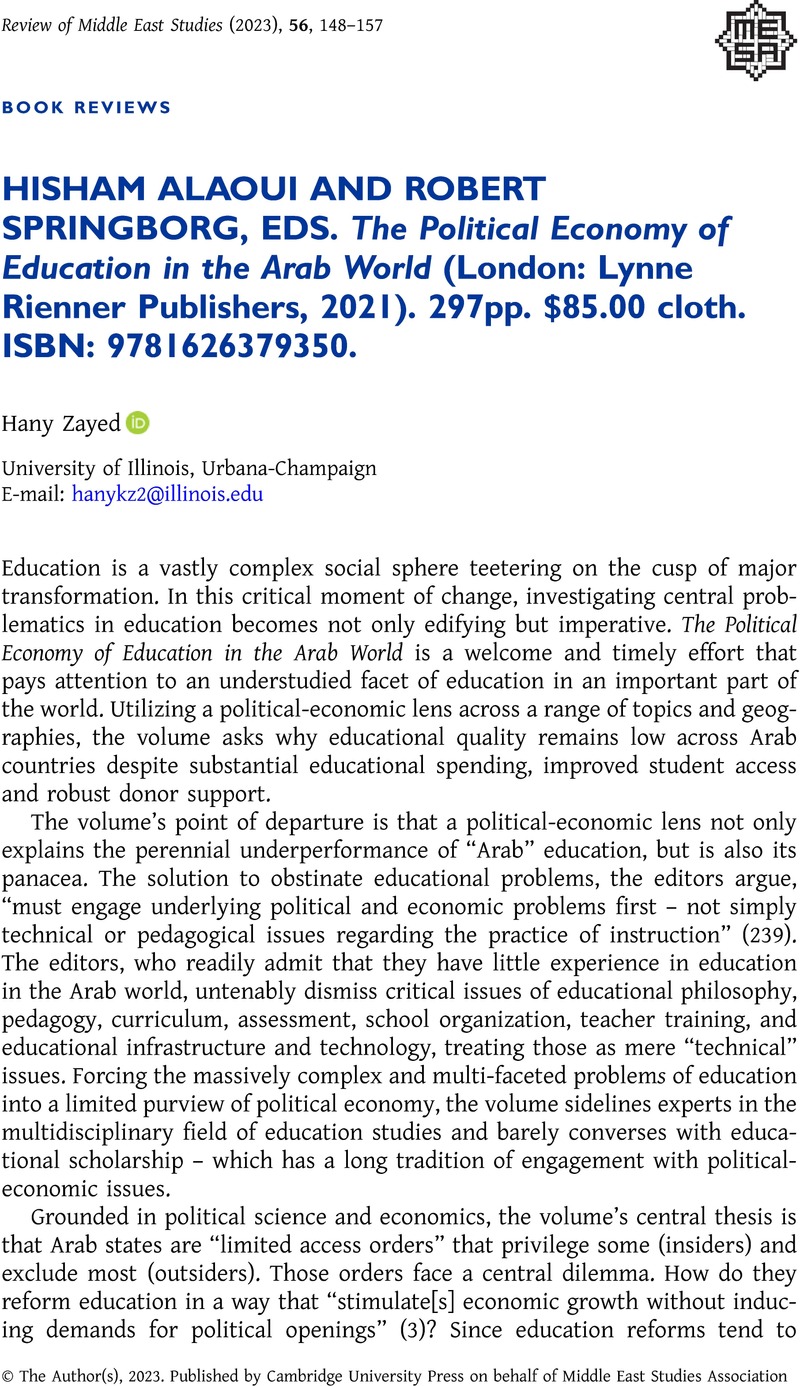No CrossRef data available.
Article contents
HISHAM ALAOUI AND ROBERT SPRINGBORG, EDS. The Political Economy of Education in the Arab World (London: Lynne Rienner Publishers, 2021). 297pp. $85.00 cloth. ISBN: 9781626379350.
Review products
HISHAM ALAOUI AND ROBERT SPRINGBORG, EDS. The Political Economy of Education in the Arab World (London: Lynne Rienner Publishers, 2021). 297pp. $85.00 cloth. ISBN: 9781626379350.
Published online by Cambridge University Press: 25 January 2023
Abstract
An abstract is not available for this content so a preview has been provided. Please use the Get access link above for information on how to access this content.

- Type
- Book Review
- Information
- Copyright
- Copyright © The Author(s), 2023. Published by Cambridge University Press on behalf of Middle East Studies Association



